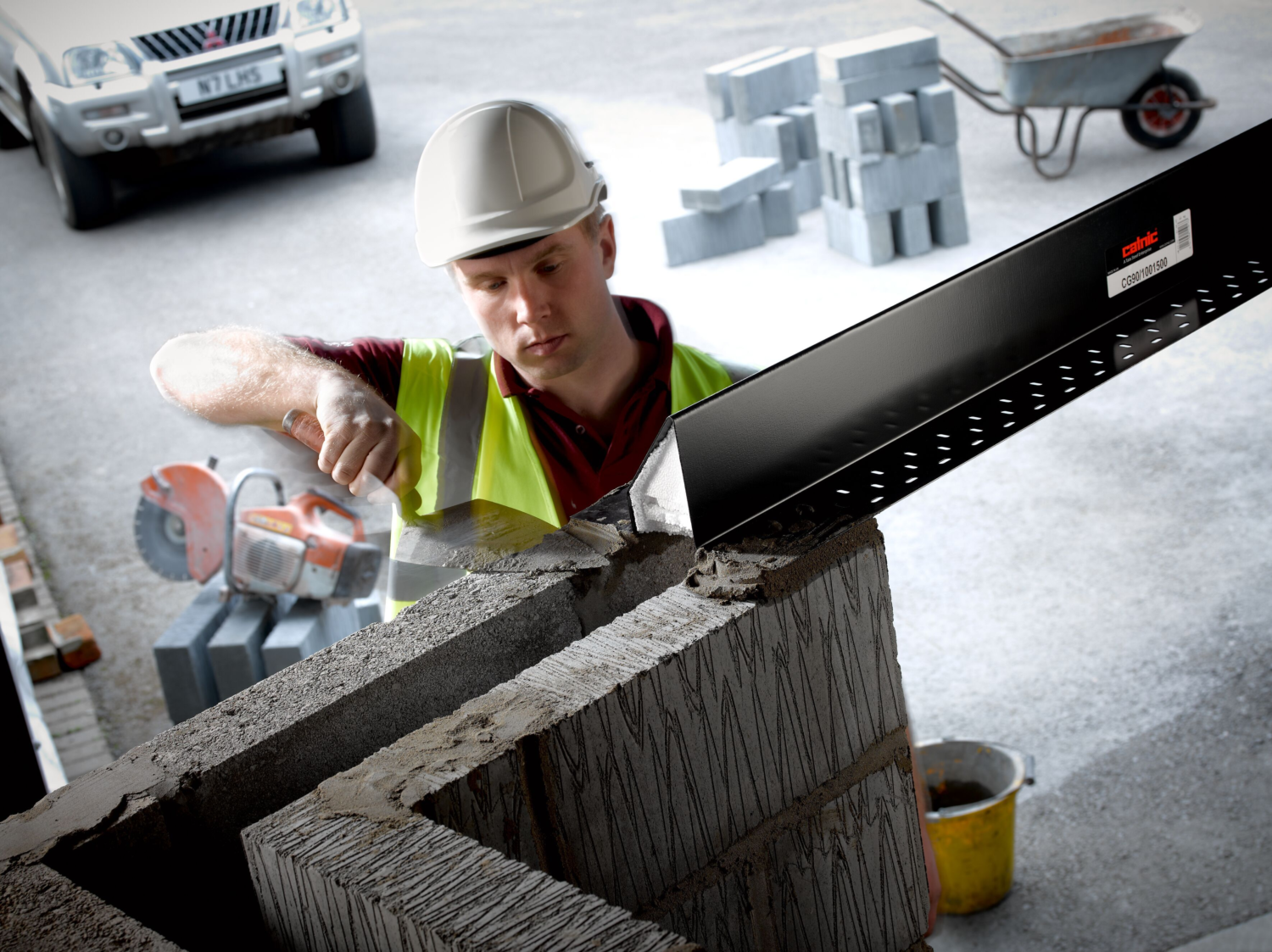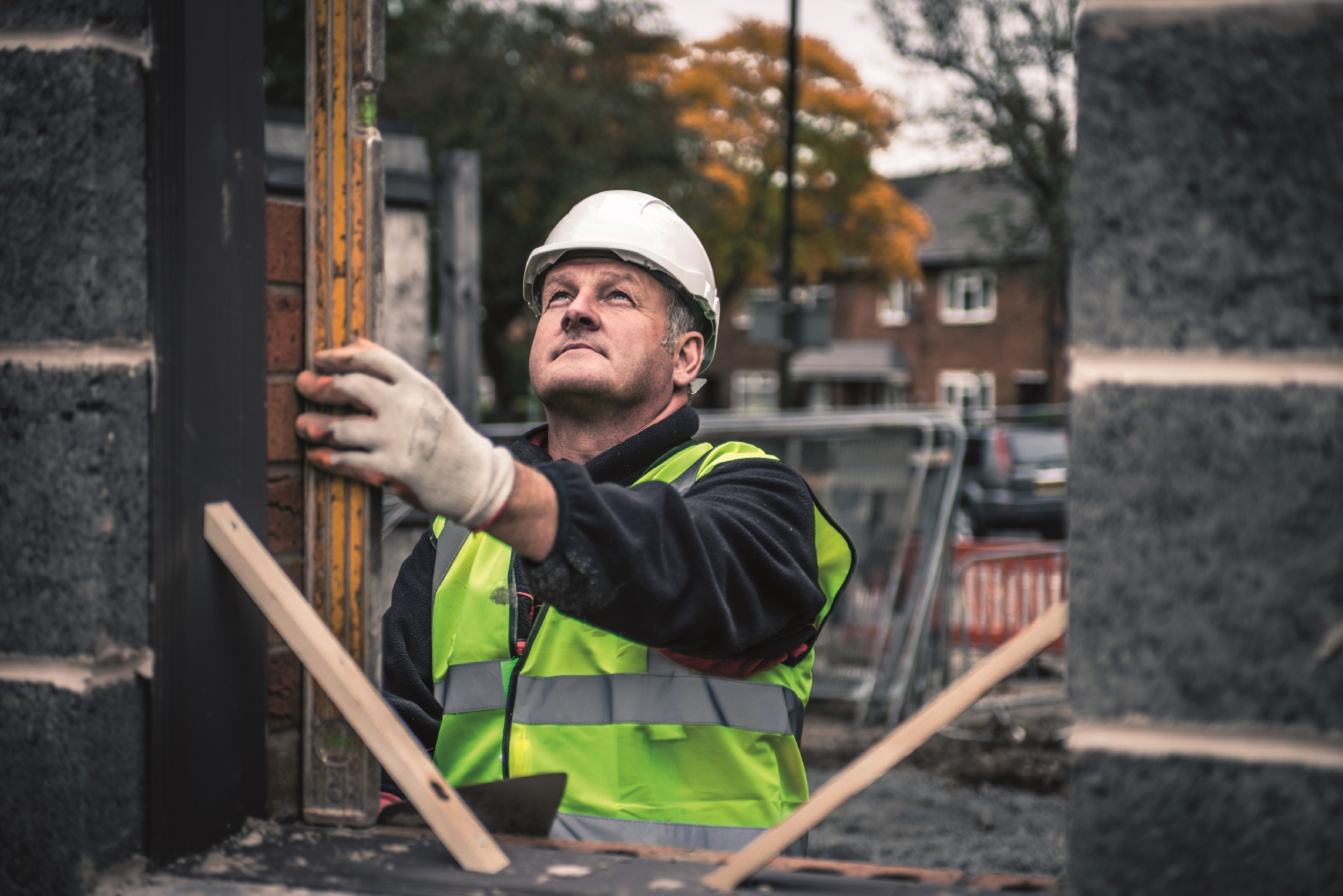⏱️ ~ 7 minute read
Whether you're installing a lintel in a solid or a cavity wall, working with a brick or a stone façade, correct lintel installation is critical to structural integrity and long-term performance. At Catnic, we know that even the best lintel specification can be undermined by poor installation — so we’ve compiled this practical guide to help you get it right first time.
This article covers everything from bearing length and loading checks to damp proofing and corrosion protection. We also answer common questions like which trade installs lintels, and whether you can fit a lintel without acrow props.
For help choosing the right lintel, see our Lintel Size Guide and Types of Lintels.
What is a steel lintel?
Steel lintels are precision-engineered supports used in masonry and timber frame constructions to span openings such as doors and windows. Many models feature a distinctive profile shape that supports the installation of a damp proof course (DPC), simplifying fitting and enhancing long-term performance. Catnic lintels also benefit from a black Duplex Corrosion Protection coating, which provides an integrated DPC and offers superior resistance to moisture and environmental exposure.

How to install a cavity wall lintel above a window or door opening
Installing a lintel requires correct measurement and levelling. Firstly, make sure to choose the correct type of lintel for the wall construction. Ensure a minimum 150mm bearing at each end, fully bedded on bricklaying mortar. The lintel must be level across its length and width and protected with a DPC (in severe exposure conditions). Allow no more than 25mm masonry overhang the lintel toe.
Fitting a lintel without acrow props
In some cases, when creating small opening in an existing wall, it may be possible to fit a lintel without acrow props. However, this should only be done following professional loads assessment. Always seek -specialist assistance before proceeding.
Single leaf lintel installation
Single leaf lintels are used in walls with only one layer of masonry. These lintels are lighter and easier to handle, but still require correct bearings, alignment, and levelling. These lintel type also requires propping during construction to prevent it tilting forward. Always check the load capacity and ensure the lintel is suitable for the wall type.

How to install a lintel in a stone wall
Stone walls present unique challenges due to the material’s uneven surface and, if the stone is not dressed, irregular in shape. Use full stones for bearing, bed the lintel carefully on mortar, and consider using a packer or shims to achieve level placement. Seek technical advice for heritage or high-load applications.
Lintel installation tips: 5 top tips from Catnic
- Check the lintel carefully Confirm the correct lintel type and inspect for damage before installation. Use Catnic’s CLASS service for a clear lintel schedule.
- Placement of the lintel Ensure 150mm bearing at each end, fully bedded on mortar. Level the lintel across both axes.
- Check the loading Do not overload the lintel. Avoid concentrated point loads on flanges. Ensure load distribution matches the original specification and seek advice for concrete floor loads.
- Protecting the lintel A Catnic open back lintel with an additional DPC membrane installed in accordance with normal practice provides the best possible protection built-in profile. In coastal or exposed areas, use Catnic soffit cladding together with the DPC for extra protection.
- Seek technical advice Never cut or modify a lintel without consulting the manufacturer. Catnic’s technical team is here to help.
Common mistakes to avoid during lintel installation
- Using damaged lintels Always inspect lintels for any type of blemishes: dents, scratches, or coating loss before installation. Damaged lintels may fail under load or corrode prematurely.
- Incorrect bearing length Failing to provide the minimum 150 mm bearing at each end can lead to structural instability. Use full bricks or blocks only — never part bricks. If you need reduced bearing, please contact Catnic’s technical department.
- Misaligned placement A lintel that’s not level across its length and width can cause uneven load distribution and structural problems. Use a spirit level and check both axes.
- Skipping temporary support Timber frame, angle and channel lintels must always be propped during construction to prevent the rotation before the masonry cures. Use a horizontal board along the flat underside of the lintel toe, and prop at maximum centres of 1 metre. For small openings, a single prop placed centrally within the opening, or equivalent supports until the structure is stable.
- Incorrect DPC application If the lintel doesn’t have a built-in DPC, apply a separate membrane correctly — turned up at the edges and sloped to direct water away from the cavity.
- Applying point loads to flanges Avoid placing concentrated loads directly on the lintel flanges without consulting Catnic’s technical department for guidance.
- Modifying lintels without approval Never cut, drill, or alter a lintel without written advice from Catnic . This can void warranties and compromise safety.
Final note to installers
If a lintel shows signs of corrosion or paint loss, follow these steps:
- Remove loose coatings and clean the surface.
- Wash with detergent and rinse thoroughly.
- Abrade old coatings and allow to dry.
- Apply two coats of direct to rust metal paint for exterior use
- Avoid painting below 5°C (ideally above 10°C).
More
-
![]()
- Plaster Bead & Mesh
- Guide
How to Fix an Angle Bead to Plasterboard
-
![]()
- Lintels
- Guide
Why thermally broken lintels are a game changer


